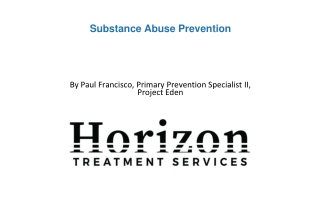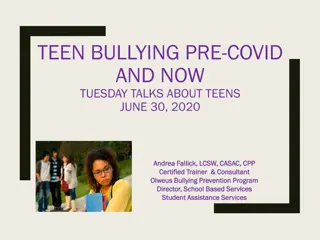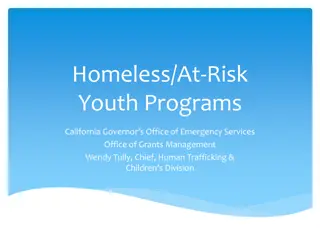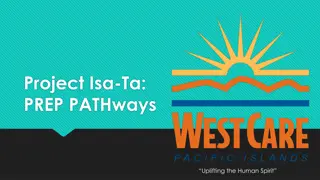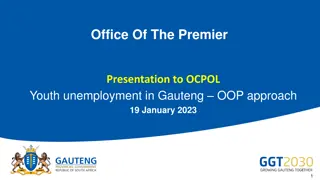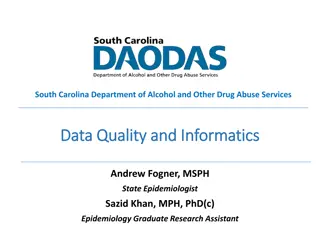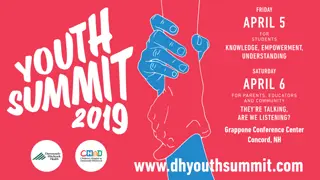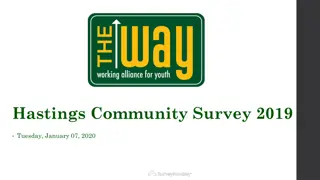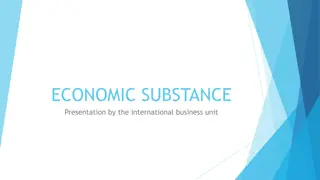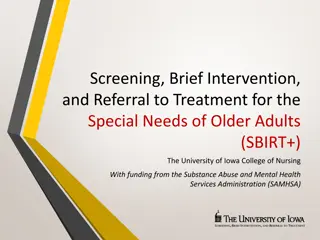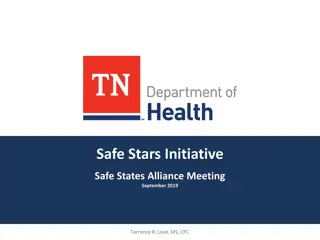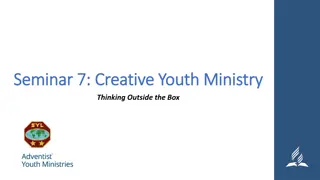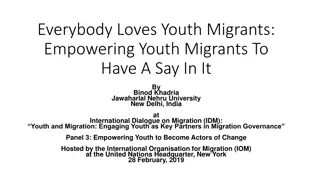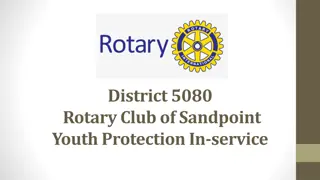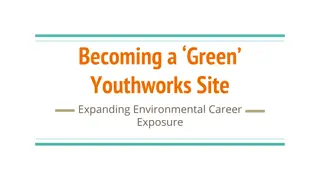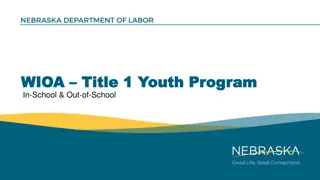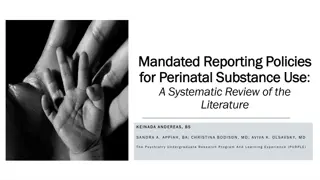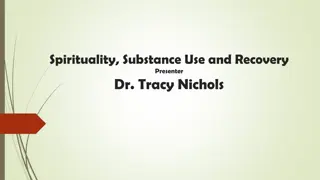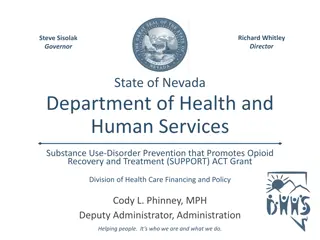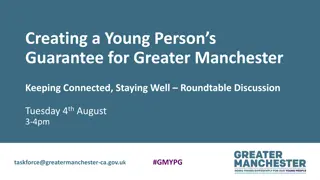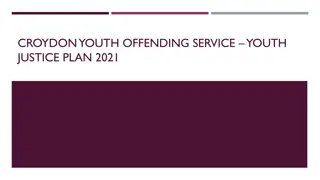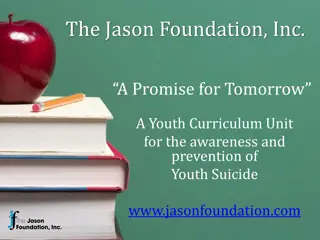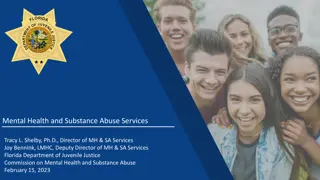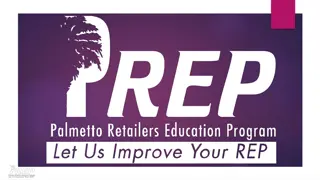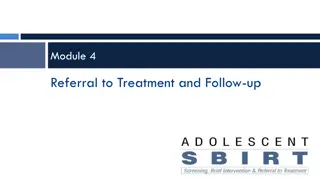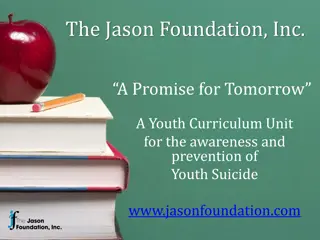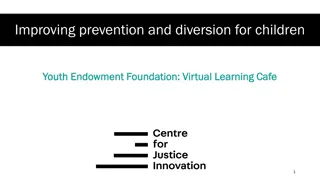Youth Substance Use Prevention in the COVID-19 Era
Understanding youth experiences and mindsets regarding substance use and prevention during the COVID-19 pandemic is crucial. With a majority of youth engaging in substance use before graduating high school, it's essential to address the prevalence and availability of substances. Despite challenges posed by the pandemic, developing effective communication pathways and engaging trusted advisors can help in shaping conversations and prevention strategies.
Download Presentation

Please find below an Image/Link to download the presentation.
The content on the website is provided AS IS for your information and personal use only. It may not be sold, licensed, or shared on other websites without obtaining consent from the author. Download presentation by click this link. If you encounter any issues during the download, it is possible that the publisher has removed the file from their server.
E N D
Presentation Transcript
Getting Candid: Framing the Conversation Around Youth Substance Use Prevention
This project is supported by the Centers for Disease Control and Prevention (CDC) of the U.S. Department of Health and Human Services (HHS) as part of a financial assistance award totaling $2,000,000 with 100% funded by CDC/HHS. The contents are those of the author(s) and do not necessarily represent the official views of, nor an endorsement, by CDC/HHS or the U.S. Government.
National Council for Mental Wellbeing Project Lead Metropolitan Group Strategic Partner | Lake Research Partners Data & Analysis Project Lead More than 2,000 youth and providers of youth services gave insights and informed content through participation in the advisory group, a virtual discussion group or interview, or online assessments. Provider and Youth Advisory Group Community Anti-Drug Coalitions of America (CADCA) Behavioral Health Innovators White Bison Lifeway International Collaborative to Advance Health Services, University of Missouri-Kansas City School of Nursing and Health Studies FrameWorks Institute Partnership to End Addiction DACCO Behavioral Health Truth Initiative School-Based Health Alliance Center for Addiction and Mental Health Research, Kaiser Permanente Peers Enjoying a Sober Education (PEASE) Academy William J. Ostiguy High School
Learning Objectives Understand youth experiences and mindsets regarding substance use and prevention during the COVID-19 pandemic. 1. Use the messaging guide to develop a conversation framework for talking with youth about substance use prevention. 2. 3. Apply the Communication Pathway based on what youth care about and find most effective.
Youth Substance Use: Prevalence & Availability A majority of youth report engaging in some form of substance use before they graduate high school. (Monitoring the Future, National Institute on Drug Abuse, 2020) Between 1975 and 2019, 79% or more of high school seniors consistently reported they could easily get marijuana. (Johnston, Monitoring the Future 2021) Despite record decreases in perceived availability of marijuana and alcohol during the first six months of the COVID-19 pandemic, use among 12th graders remained steady. (Miech, 2021; Chaffee, 2021) The COVID-19 pandemic and its resulting isolation has generated stress and other mental health challenges for youth. (Snell, 2021)
We Asked Youth Answered Who are you likely to trust in advising you not to use or to stop using substances? How do you feel most days? Stressed 44% Youth or adults who formerly used substances (68%) Okay 27% Worried 27% Health care providers (68%) Lonely 25% Worried/Anxious 25% Friends orpeers (67%) Happy 25% Parents/guardians (63%) Depressed 24% What do you do to cope when feeling sad, worried or stressed these days? Music, art, read, write 25% Talk with friends or family 20% Video games, TV, movies 18%
What Providers Believed about Youth What Youth Identified About Themselves Peers, friends, fitting in and appearance matter most. Use substances because friends are doing it or to cope with problems with family, friends or school. Family matters most. Key reason not to use is concern about messing up the future. Use substances for enjoyment and fun. Use substances because it s something to do when bored or lonely. In-person is the most effective way to engage youth.
Goal of the Message Guide and Communication Pathway To equip youth-serving providers with effective substance use prevention messaging and share guidance on how to effectively deploy this messaging with middle and high school age youth.
Communication Pathway Build rapport and establish trust. Seek guidance and input from youth on what matters to them. Select evidence to provide compelling reasons not to use drugs or alcohol. Select one or more actions to suggest. Choose the frame for communication based on insights from youth.
Communication Pathway Ask permission before sharing info. Create a safe space. Be authentic. Approach the conversation informally. Do more listening than talking. Be transparent and trustworthy. Pay attention to body language.
Communication Pathway Seek guidance and input from youth on what matters to them. Ask things like What matters most to you in your life and why? What do you look forward to most in the coming year (or after you graduate, or beyond) and why? When you re faced with making a touch choice or decision, what do you consider or think about most?
What Matters Becomes the Framework If youth responds in a way that suggests the following are important to them then frame the conversation in terms of: Their plans for the coming year, for entering high school or college or for the future, in general. The future Their physical or mental health. Risk of addiction Relationships that matter to them (e.g., parents/guardians, friends, teachers, coaches, mentors). Relationships Their activities in or out of school (e.g., sports, music, volunteering). Activities Being respected for their autonomy and being able to make their own choices. Self-affirmation
Communication Pathway The future: The future:Don t let drug and alcohol use change or control your plans for the future. Risk of addiction: Risk of addiction:Drug and alcohol use change parts of your brain that impact how you think and act. The more you use them, the harder it can be to stop, even if you want to. Relationships Relationships: :There are people in your life who matter to you. (For try hard not to let them down. (For (Forhigh school) (Formiddle school) middle school)And you high school)And you try hard to make them proud. Activities: Activities:Participating in sports, music, hobbies or other activities can help you build friendships, stay in shape, get into and receive scholarships for college and have fun. Self Self- -affirmation : affirmation : You respect yourself and want to make decisions that are best for you. Trust yourself and your choice not to use drugs or alcohol.
Communication Pathway Some statements considered most convincing by youth: Not only is purchasing drugs and alcohol illegal for people your age; it also takes money you could be saving or spending on other things you want, need or enjoy. Marijuana use directly affects the brain, especially at your age when your brain is still developing. It can make it harder to pay attention, remember things and learn. More than 30 people die from overdoses involving prescription pain medications every day. Even people who are prescribed pain medications by a doctor can become addicted. Signs of addiction can include feeling nauseated when you stop taking the drug or needing to take more medication than before to feel better. Alcohol can alter your mood, energy, memory and increase anxiety or depression.
Communication Pathway Actions identified by youth as those they would most likely take: Make your own personal commitment or pledge to avoid alcohol, tobacco/ nicotine, marijuana and other drugs. .* * Explore new ways of dealing with stress, like music, reading, art, getting outdoors, talking with friends you trust or just being by yourself.* * Talk to your friends and encourage them not to use alcohol, tobacco/ nicotine, marijuana and other drugs.* * Find someone you can talk to if you feel tempted or pressured to use alcohol, tobacco/nicotine, marijuana or other drugs. Educate yourself about alcohol, tobacco/nicotine, marijuana and other drugs by visiting a website or information on social media. *Resonated particularly well with middle school youth *Resonated particularly well with middle school youth. .
Communication Pathway: Putting it All Together Inclusive Private space What are some things that matter most in your life? Respectful It sounds like you re very close to your parents and try hard not to let them down. Informal Non-judgmental listening How might they react if you were involved with drugs or alcohol? Alcohol can alter your mood, energy, memory and increase anxiety or depression. In what way does this information fit with what you ve been thinking about, or not? What would it be like if you made a pledge to yourself not to get involved with drugs and alcohol? How do you think your parents would feel about that decision?
Practice Scenario 15-year-old male started attending counseling intermittently three months ago when his parents first separated. His mother made an appointment today because first report card came out. He is failing two classes and she discovered several unexcused absences on his attendance record. Build rapport & establish trust. Seek guidance & input from youth on what matters to them. Example: Create a safe space. Choose the frame for communication based on insights from youth. Select evidence to provide compelling reasons not to use drugs or alcohol. Select one or more actions to suggest. Example: What about making a pledge to yourself not to get involved with drugs & alcohol? How would your parents feel about that? Example: What matters most in your life? Example: It sounds like you re really close to your parents & try hard not to let you down. Example: Let s talk about what drugs and alcohol might do to you & why it s a good idea to avoid them.
Toolkit: Additional Resources Safely Communicating with Youth Building rapport and trust Engaging parents/caregivers Making Connections Resource referrals Warm handoffs Techniques for Engagement Language guide Motivational Interviewing Implementation and sustainability Implementation plan Training/educational course Sharing Information with Young People Substance fact sheets Risks and protective factors www.thenationalcouncil.org/getting-candid



